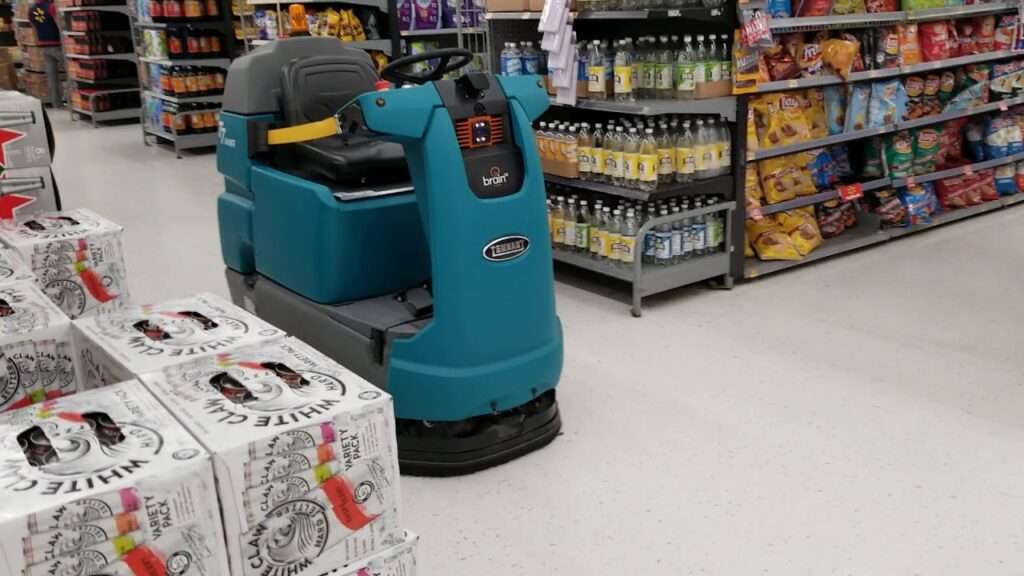Problem: E-Commerce is Rapidly Changing, and Retailers Must Keep Up
The Future of E-commerce is no longer a side gig for retailers; it’s the battleground that determines the future of retail. Consumer expectations have skyrocketed. They demand same-day delivery, personalized experiences, and seamless online and offline integration. For retailers, these demands pose a big challenge.
The competition is fierce, and meeting these expectations without losing money is a tough act. In the middle of this upheaval, Walmart, one of the world’s largest retailers, has made strides in automation, which holds valuable lessons for anyone in the retail game.
Retailers who fail to innovate with automation risk falling behind. Walmart’s recent moves in automation offer an inside look into how e-commerce is evolving. The company has invested billions of dollars into automating its supply chain, fulfillment centers, inventory management, and customer service.
The results? Faster order processing, lower costs, improved accuracy, and higher customer satisfaction. Walmart’s approach serves as a roadmap for the future of retail, one that revolves around automation.

Agitation: What Happens if You Don’t Automate?
Ignoring automation isn’t just a missed opportunity; it could mean the end of your business. According to McKinsey, companies that adopt automation could reduce costs by 30-50% in various operations. For Walmart, automation has led to a significant decrease in labor costs—specifically, a 20% reduction in their fulfillment centers.
By leveraging robotics and AI-driven systems, Walmart can process orders up to 3 times faster than traditional methods. Think about that—3 times faster. In a world where speed is money, being slow means falling behind.
Furthermore, the automation of inventory management has provided Walmart with a crucial edge. The company uses AI to analyze customer data and predict demand, allowing them to manage inventory more efficiently.
This has reduced stockouts by 15% and slashed excess inventory costs by 25%. When a customer finds what they want, when they want it, that’s not just a sale—it’s loyalty. If you’re not on board with these advancements, you’re not just losing out on efficiency—you’re losing customers to competitors who are faster, more accurate, and better at predicting what customers want.
Retailers who continue relying on outdated methods will face rising operational costs and declining customer satisfaction. It’s not just about having an online store; it’s about having an efficient, automated operation that can scale. Walmart’s strategies show us the consequences of not innovating—slower delivery times, higher labor costs, and dwindling market share. The numbers don’t lie: businesses that fail to automate risk becoming obsolete.
Solution: Walmart’s Blueprint for the Future of E-Commerce
So, what is Walmart doing differently, and how can you apply these strategies to your business? Let’s break down Walmart’s key automation tactics and how they point to future trends in e-commerce:
1. Automated Fulfillment Centers: Faster, Cheaper, Better
Walmart’s automated fulfillment centers are a cornerstone of its e-commerce strategy. With robotics and automated sorting systems, these centers can fulfill online orders up to 3 times faster than manual methods. In its Pedricktown, New Jersey, fulfillment center, Walmart introduced Alphabot, an automated cart system that retrieves products from storage and delivers them to employees for packing. This innovation reduces picking times by more than 60% and minimizes the likelihood of errors.
The result? Walmart is able to offer same-day delivery on more than 160,000 items, a significant feat for a retailer of its size. Retailers must recognize that automation in fulfillment is no longer optional—it’s mandatory. Speed and accuracy are essential for meeting customer expectations and retaining their loyalty. Walmart’s success proves that investing in automated fulfillment can drastically reduce costs and enhance service.
2. AI-Driven Inventory Management: Get the Right Product to the Right Place
Inventory management is a notorious pain point for retailers. Overstocking leads to excess costs, while understocking can result in missed sales and dissatisfied customers.
Walmart’s use of AI to manage inventory levels is a game-changer. The company uses machine learning algorithms to analyze sales data, seasonal trends, and external factors like weather and local events. This allows them to predict demand more accurately and keep optimal stock levels.
In a recent case study, Walmart’s AI-driven inventory system reduced out-of-stock incidents by 15% and cut down on excess inventory by 25%.
It’s not just about stocking shelves; it’s about ensuring the right products are available when customers want them. This predictive capability reduces waste and maximizes profitability—a win-win. Retailers looking to stay competitive must invest in similar AI tools to optimize inventory and ensure they are always meeting customer demand.
3. Supply Chain Optimization: Efficiency from Start to Finish
Supply chain inefficiency is one of the biggest cost drivers in retail. Walmart has tackled this challenge head-on by integrating automation throughout its supply chain, from warehouses to delivery trucks.
Using IoT sensors and machine learning algorithms, Walmart can monitor inventory levels in real-time, optimize delivery routes, and predict supply chain disruptions before they happen.
This strategy has significantly reduced supply chain costs. A report by Deloitte noted that companies leveraging IoT and AI in supply chain management see cost reductions of up to 30%.
Walmart’s integration of these technologies has not only reduced costs but also improved delivery speed and reliability. Retailers must look at their supply chain and ask: Where can automation make us faster, more efficient, and more reliable? Walmart’s success in this area is a clear sign that supply chain automation is key to future competitiveness.
4. Automated Customer Service: Scaling Without Losing the Personal Touch
Customers want quick, accurate answers, and they want them 24/7. Walmart’s use of AI-powered chatbots and virtual assistants is a masterclass in meeting these needs efficiently.
The company has deployed automated systems capable of handling thousands of customer queries per minute, from order tracking to returns and refunds. This reduces the burden on human customer service representatives and allows them to focus on more complex issues.
Walmart’s automated customer service systems have improved response times by 40% and have helped resolve up to 80% of inquiries without human intervention. Retailers must note that this doesn’t mean losing the human touch—it means focusing human resources where they’re needed most, creating a more personalized customer experience. Automation in customer service is not just about cutting costs; it’s about scaling efficiently while maintaining quality.
5. Last-Mile Delivery: Solving the Most Expensive Problem
Last-mile delivery is often the most costly and complex part of the fulfillment process. Walmart has been testing autonomous delivery vehicles, drones, and delivery bots to optimize this critical step. In a recent pilot project in Arkansas, Walmart used autonomous delivery vehicles to transport orders from its stores directly to customers’ homes. The results were promising: a 10% reduction in delivery times and a 15% decrease in last-mile delivery costs.
For retailers, this is a clear indication that traditional delivery methods are no longer sufficient. The last mile needs to be efficient, cost-effective, and scalable. By leveraging autonomous delivery technology, Walmart is setting a precedent that other retailers will have to follow to keep up with customer expectations and reduce costs.
6. Data-Driven Personalization: AI Makes Shopping Smarter
Personalization is more than a buzzword; it’s a necessity. Walmart’s use of AI to analyze customer behavior, purchase history, and browsing patterns allows it to offer personalized product recommendations and targeted promotions.
This level of customization not only enhances the shopping experience but also drives higher conversion rates. A McKinsey study found that personalization can lead to a 10-15% boost in revenue for retailers.
Walmart’s data-driven approach has led to an increase in average order value and repeat purchases. Retailers who ignore personalization are leaving money on the table. By using AI to understand customers better, retailers can provide a more engaging shopping experience that keeps customers coming back.
The Big Picture: What Walmart’s Automation Tells Us About Retail Trends
The retail landscape is shifting, and the message is clear: automation is the future of e-commerce. Walmart’s aggressive push towards automation shows us that investing in technology is not just a trend; it’s a business imperative. Here’s what other retailers need to learn from Walmart:
- Efficiency is Everything: Automation leads to faster processing times, lower costs, and reduced errors. If you’re not investing in automation, you’re wasting money and losing customers.
- Adapt or Die: Consumer expectations are evolving rapidly. Retailers who can’t adapt to demands for faster delivery, personalized service, and seamless integration will be left behind.
- Data is Gold: Retailers must harness the power of data to drive decision-making, optimize operations, and enhance customer experiences. Walmart’s success shows that data-driven strategies are key to staying competitive.
- Innovation is Key: From automated fulfillment centers to autonomous delivery vehicles, innovation is at the core of Walmart’s strategy. Retailers must be willing to experiment, learn, and innovate to stay ahead.
- Sustainability Matters: Walmart is also looking at automation as a way to promote sustainability, using energy-efficient robots and optimizing delivery routes to reduce carbon footprints. As consumers become more eco-conscious, retailers must follow suit or risk alienating a growing segment of their customer base.
Conclusion: The Future is Automated, and It’s Here Now
Walmart’s automation strategies are not just about improving efficiency—they’re about redefining the future of e-commerce. The lessons are clear: retailers must embrace automation to cut costs, improve customer satisfaction, and scale operations efficiently. As technology continues to advance, those who invest in automation will lead the way in the new era of retail.
For retailers who want to stay competitive, the time to act is now. Automation is not just a trend; it’s the new standard. And as Walmart has

Leave a Reply